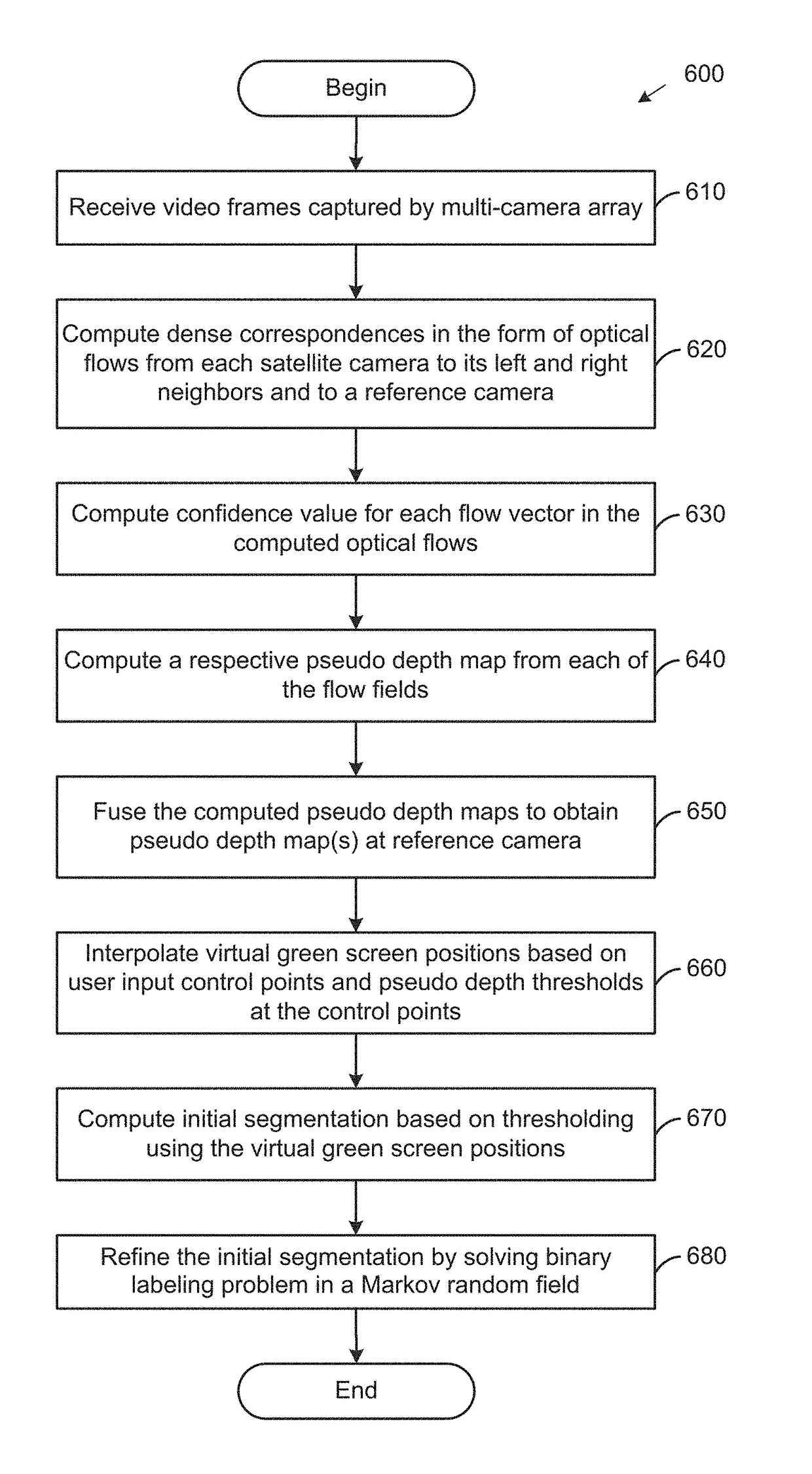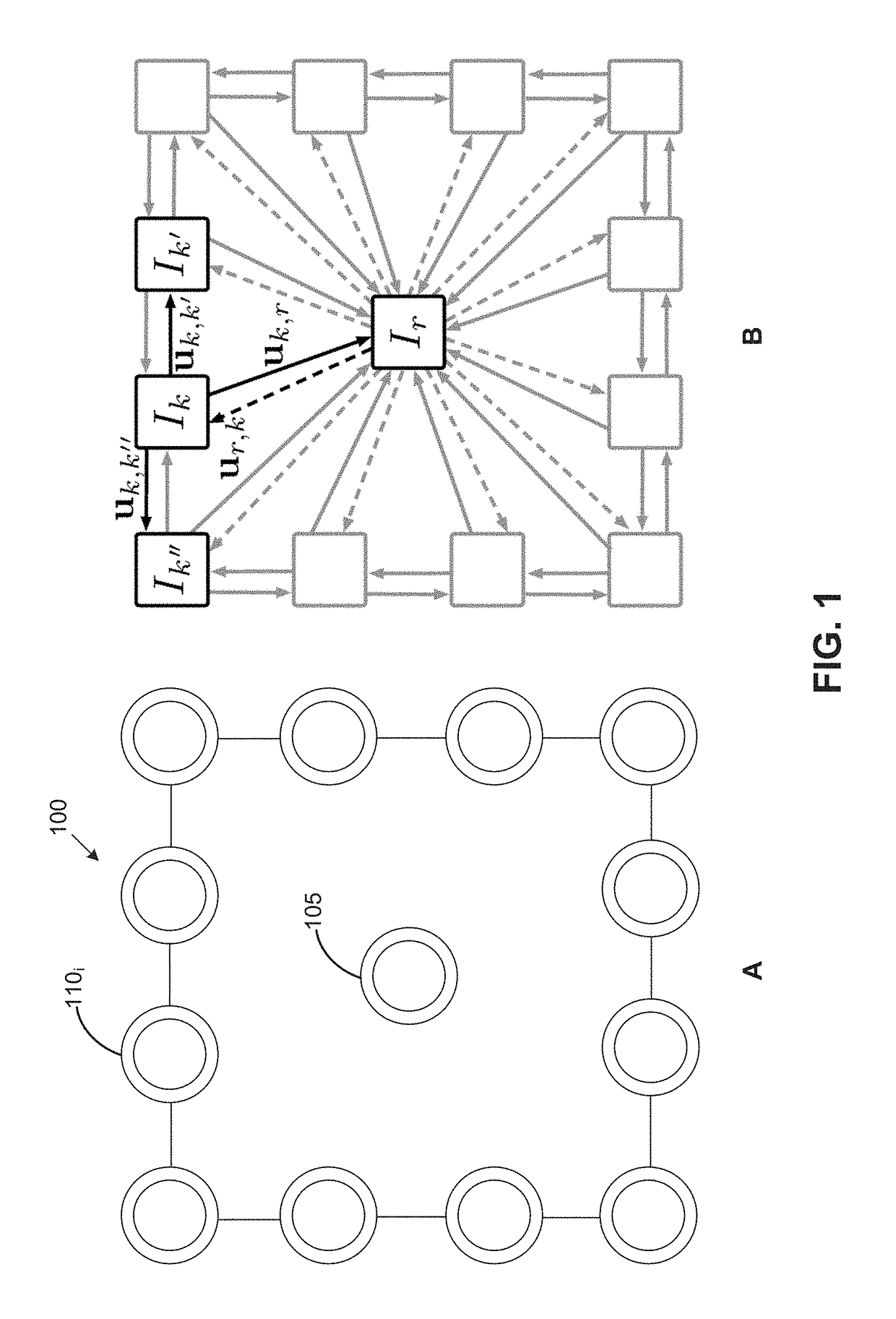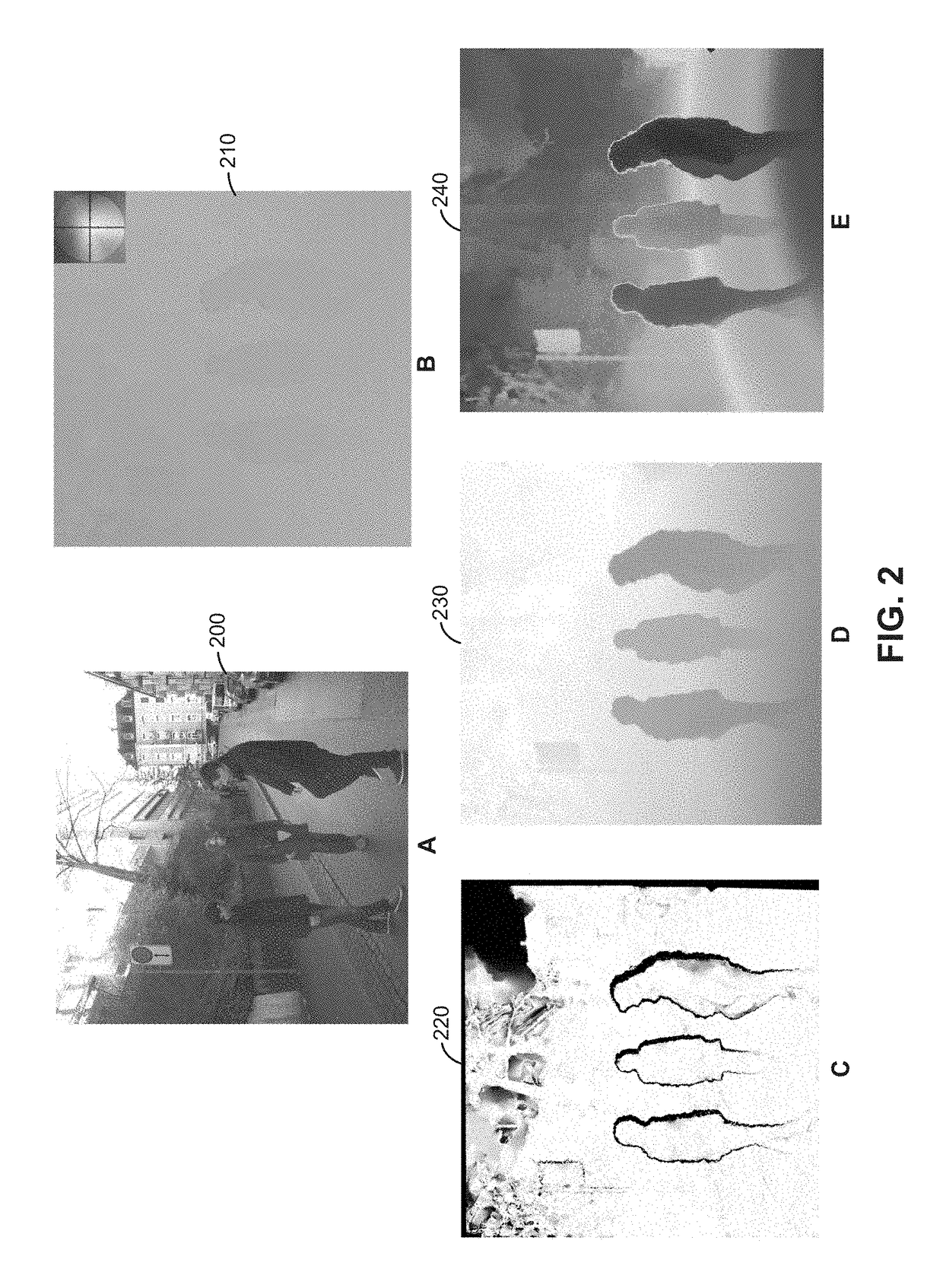Video segmentation from an uncalibrated camera array
a camera array and video segmentation technology, applied in the field of video processing, can solve the problems of masked areas spilling color onto foreground objects, creating unnatural acting environments, and a significant and expensive effort in setting up green screens
- Summary
- Abstract
- Description
- Claims
- Application Information
AI Technical Summary
Benefits of technology
Problems solved by technology
Method used
Image
Examples
Embodiment Construction
[0015]Aspects presented herein provide an approach for image segmentation from an uncalibrated camera array. In contrast to traditional green screens and chroma keying, a segmentation application obtains depth information for pixels of an image and performs a depth-based segmentation based on a “virtual” placement of a green screen after the image is captured. In one aspect, the segmentation application computes a pseudo depth map for each frame of a video sequence recorded with a camera array, based on dense correspondences between cameras in the array. As used herein, a pseudo depth generally refers to a depth ordering of pixels indicating a relative depth of each pixel with respect to other pixels in an image, without reconstructing actual depths of the pixels. Computing pseudo depths does not require geometric or photometric camera calibration (i.e., the camera array may be uncalibrated), and there is no metric meaning behind pseudo depths, i.e., the pseudo depths do not actuall...
PUM
 Login to View More
Login to View More Abstract
Description
Claims
Application Information
 Login to View More
Login to View More - R&D
- Intellectual Property
- Life Sciences
- Materials
- Tech Scout
- Unparalleled Data Quality
- Higher Quality Content
- 60% Fewer Hallucinations
Browse by: Latest US Patents, China's latest patents, Technical Efficacy Thesaurus, Application Domain, Technology Topic, Popular Technical Reports.
© 2025 PatSnap. All rights reserved.Legal|Privacy policy|Modern Slavery Act Transparency Statement|Sitemap|About US| Contact US: help@patsnap.com



